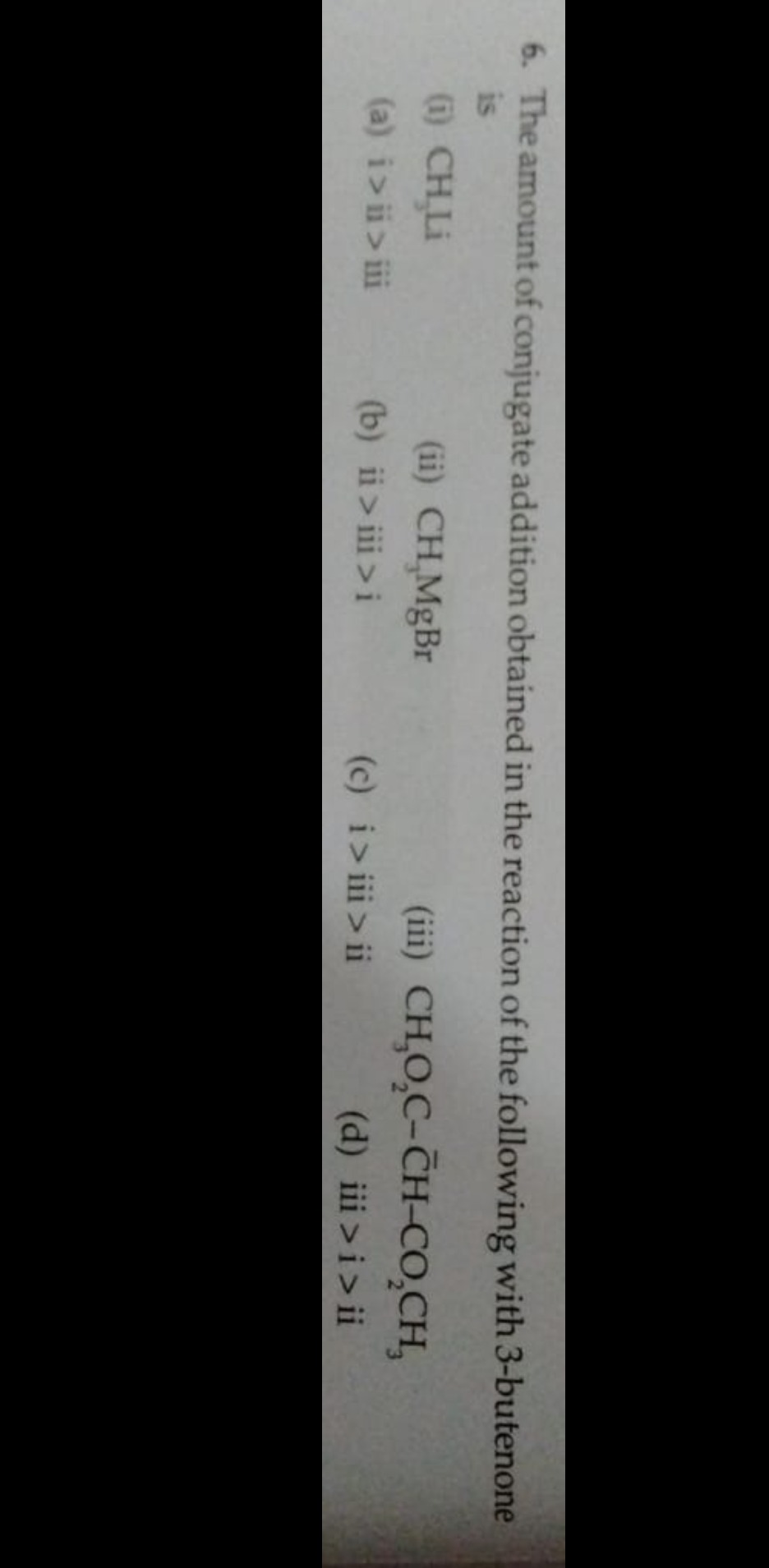Question
Question: The amount of conjugate addition obtained in the reaction of the following with 3-butenone is (i) $...
The amount of conjugate addition obtained in the reaction of the following with 3-butenone is
(i) CH3Li (ii) CH3MgBr (iii) CH3O2C−CˉH−CO2CH3

i > ii > iii
ii > iii > i
i > iii > ii
iii > i > ii
iii > i > ii
Solution
The reaction of nucleophiles with α,β-unsaturated carbonyl compounds can result in two types of addition: 1,2-addition (direct addition to the carbonyl carbon) and 1,4-addition (conjugate addition to the β-carbon). The preference for 1,2- vs 1,4-addition is largely governed by the hardness or softness of the nucleophile.
According to the Hard and Soft Acid and Base (HSAB) principle, hard nucleophiles prefer to react with hard electrophilic centers (like the carbonyl carbon), leading to 1,2-addition. Soft nucleophiles prefer to react with soft electrophilic centers (like the β-carbon), leading to 1,4-addition.
Let's analyze the nature of the given nucleophiles:
(i) CH3Li: Methyllithium is an organolithium reagent. It is a very strong base and a hard nucleophile, favoring 1,2-addition.
(ii) CH3MgBr: Methylmagnesium bromide is a Grignard reagent. It is a strong base and nucleophile, but generally less hard than organolithium reagents. It tends to favor 1,2-addition, but the proportion of 1,4-addition can be significant.
(iii) CH3O2C−CˉH−CO2CH3: This is the enolate of dimethyl malonate, a soft nucleophile. Soft nucleophiles are known to favor 1,4-addition (Michael addition).
Therefore, the amount of conjugate addition (1,4-addition) is expected to be in the order of increasing softness of the nucleophile. The correct order is (iii) > (i) > (ii).
